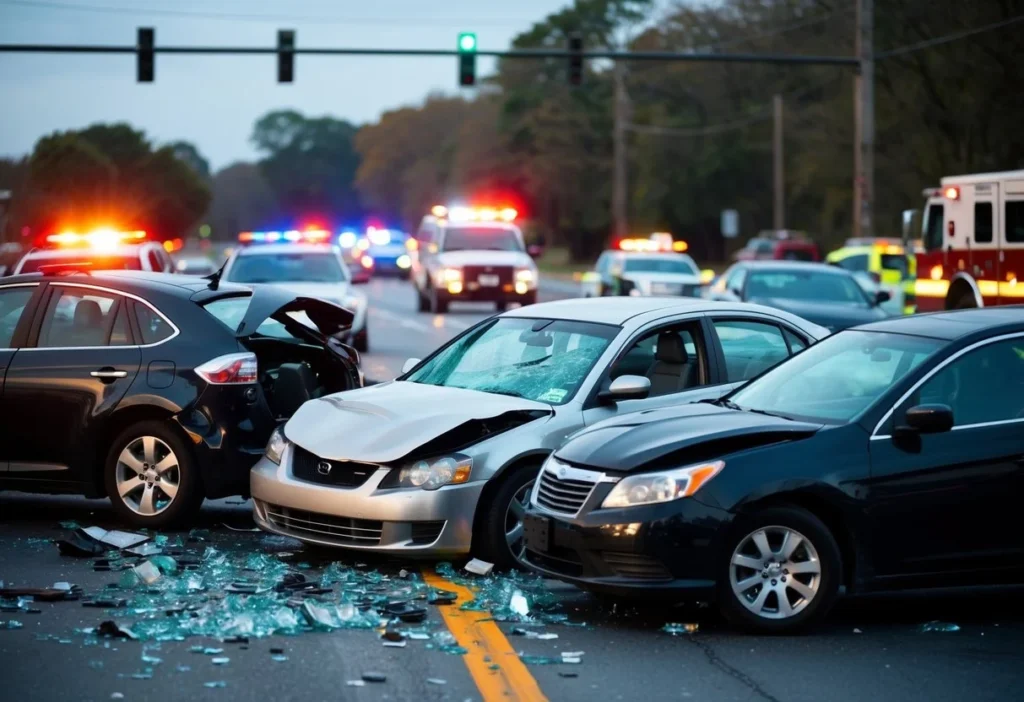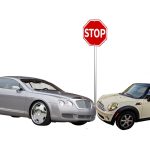Tuscaloosa’s roadways can be treacherous, especially at certain intersections known for their high accident rates. The city’s most dangerous intersections are characterized by a combination of heavy traffic and a history of collisions, making them critical areas for drivers to navigate with caution. Recognizing these hotspots can help motorists take preventive measures and make informed decisions while on the road of Tuscaloosa.
Intersections like McFarland Boulevard and Skyland Boulevard have gained notoriety, recording numerous crashes over the years. With traffic often backed up and poor visibility contributing to the risks, understanding these locations can provide essential insights for avoiding dangerous situations. As Tuscaloosa continues to grow, awareness of these hazardous intersections becomes increasingly important for public safety.
By exploring the details of the most perilous intersections, drivers can better prepare themselves for the challenges they may encounter. Staying informed about these areas not only enhances personal safety but also contributes to the overall well-being of the community.
Analysis of High-Risk Intersections in Tuscaloosa
Tuscaloosa’s high-risk intersections play a significant role in the city’s traffic safety challenges. Understanding the statistical data, identifying the most dangerous spots, and examining contributing factors can provide insights into the ongoing issues with car accidents in the region.
Statistical Overview of Car Accidents
The data on car accidents in Tuscaloosa highlights troubling patterns. In recent years, intersections like McFarland and Skyland Boulevard reported 160 crashes involving 323 vehicles. Another intersection, McFarland and 15th Street East, experienced 101 crashes with 207 vehicles involved.
Such statistics emphasize the need for targeted interventions. The frequency of these accidents raises concerns about public safety. Authorities often analyze these figures to identify trends, facilitating data-driven decisions aimed at improving intersection safety.
Top Five Dangerous Intersections
Several intersections in Tuscaloosa stand out as the most perilous. These include:
- McFarland and Skyland Boulevard
- McFarland and 15th Street East
- 15th Street and Sixth Avenue
- University Boulevard and 10th Avenue
- Hargrove Road and 12th Avenue
The intersections are notorious for frequent accidents, making them critical points for safety improvements. Each of these requires monitoring to implement effective solutions, such as traffic signal enhancements or better signage.
Traffic Flow and Infrastructure Factors
Traffic flow and infrastructure significantly influence accident rates. High volumes of vehicles often contribute to congestion, leading to increased risks of collisions. For example, the intersection of McFarland and Skyland Boulevard is characterized by heavy traffic.
Moreover, the design of these intersections can also play a vital role. Poor visibility, inadequate signage, and limited space for maneuvering exacerbate the risk. Implementing measures like red-light cameras at intersections could mitigate some of these issues, enhancing overall safety on Tuscaloosa’s roads.
Preventive Measures and Safety Improvements
Implementing effective preventive measures and safety improvements is essential for addressing the dangerous intersections in Tuscaloosa. Focused strategies from city planning and enhanced public awareness play vital roles in reducing car accidents.
City Planning and Traffic Management Strategies
City planners in Tuscaloosa are prioritizing traffic management to enhance safety. This includes the installation of traffic signals at high-risk intersections and improving signage for clearer navigation.
Examples of key strategies include:
- Roundabouts: These can reduce the likelihood of severe accidents by allowing continuous traffic flow.
- Road Markings: Enhanced lane markings and reflective paint can improve visibility, especially at night.
Traffic studies are also conducted regularly to identify accident hotspots. This data-driven approach helps in allocating resources effectively for infrastructure enhancements.
Safety Campaigns and Public Awareness
Public awareness campaigns are crucial for educating drivers and pedestrians about safety. Tuscaloosa has initiated programs aimed at promoting responsible driving behavior and pedestrian safety.
These campaigns often feature:
- Workshops: Engaging community members to discuss safe driving practices.
- Social Media Outreach: Utilizing platforms to share safety tips and highlight dangerous areas.
In collaboration with expert car accident lawyers in Tuscaloosa, these efforts aim to provide legal insights on the implications of traffic violations, reinforcing the importance of adherence to traffic laws.
What to Do After an Accident
Experiencing a car accident can be overwhelming. Knowing the immediate steps to take and the importance of legal assistance can greatly impact the situation.
Immediate Steps Following a Collision
After a collision, safety is the top priority. Start by ensuring that all parties are unharmed. If anyone is injured, it is essential to call 911 for emergency assistance.
Next, move vehicles to a safe location if possible, while avoiding further accidents. Document the scene by taking clear photographs of the vehicles, damage, and surroundings.
Exchange information with other drivers, including names, contact details, driver’s license numbers, and insurance information. Collect witness statements, as their accounts may be crucial later.
Do not admit fault at the scene. Fault determination can become complex and is best left for insurance adjusters or legal professionals.
Seeking Legal Assistance
After addressing immediate safety concerns, consulting with an expert car accident lawyer in Tuscaloosa is advisable. A qualified attorney can guide individuals through the claims process and help secure compensation for injuries and damages.
When hiring a lawyer, look for professionals with experience dealing specifically with car accidents. A knowledgeable attorney can evaluate the case and assist with collecting evidence, negotiating with insurance companies, and representing clients in court if necessary.
Timeliness is crucial—some jurisdictions set limits on filing claims. Legal representation can be the difference between receiving fair compensation and facing ongoing financial burdens due to medical expenses or vehicle repairs.







